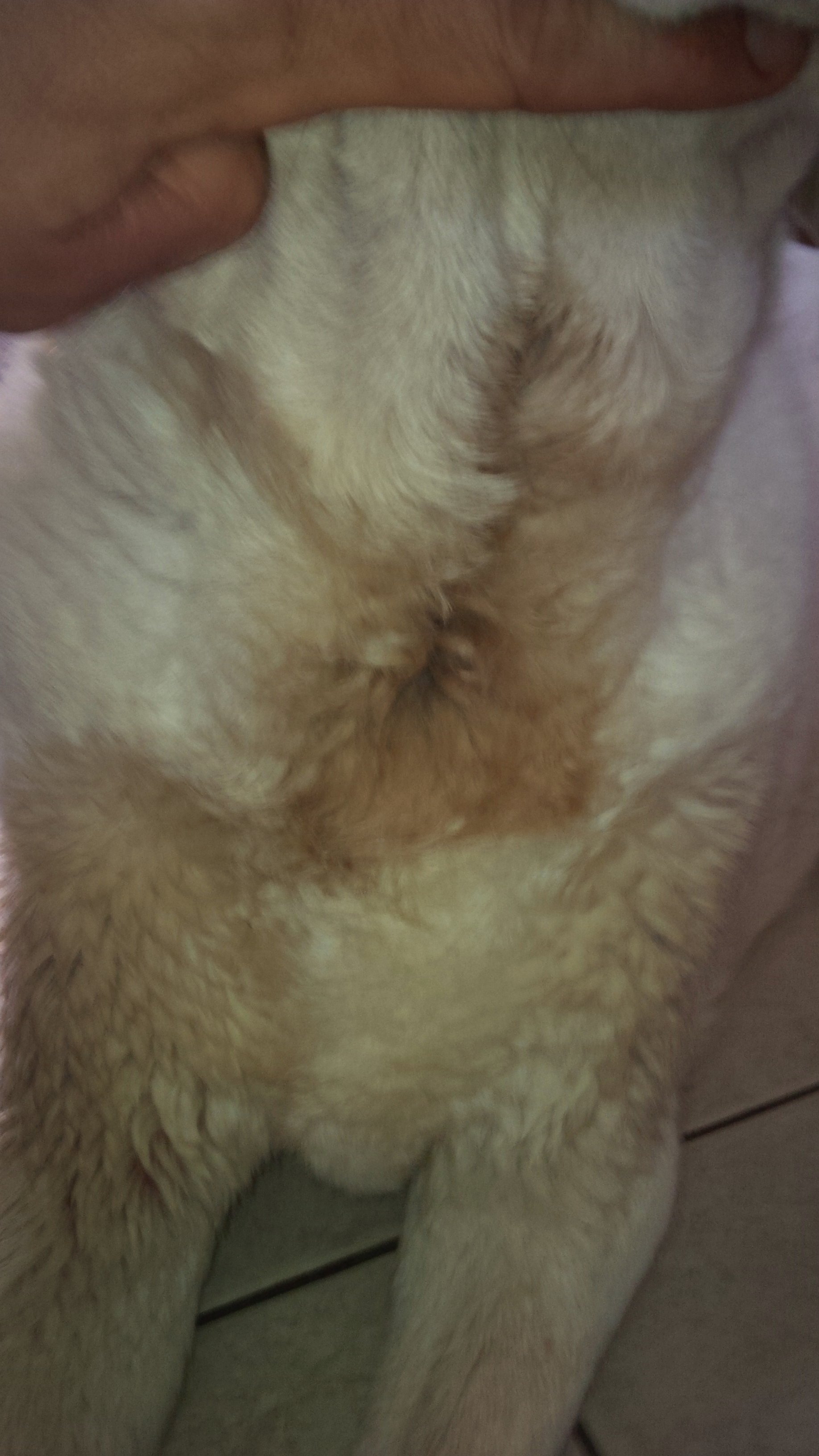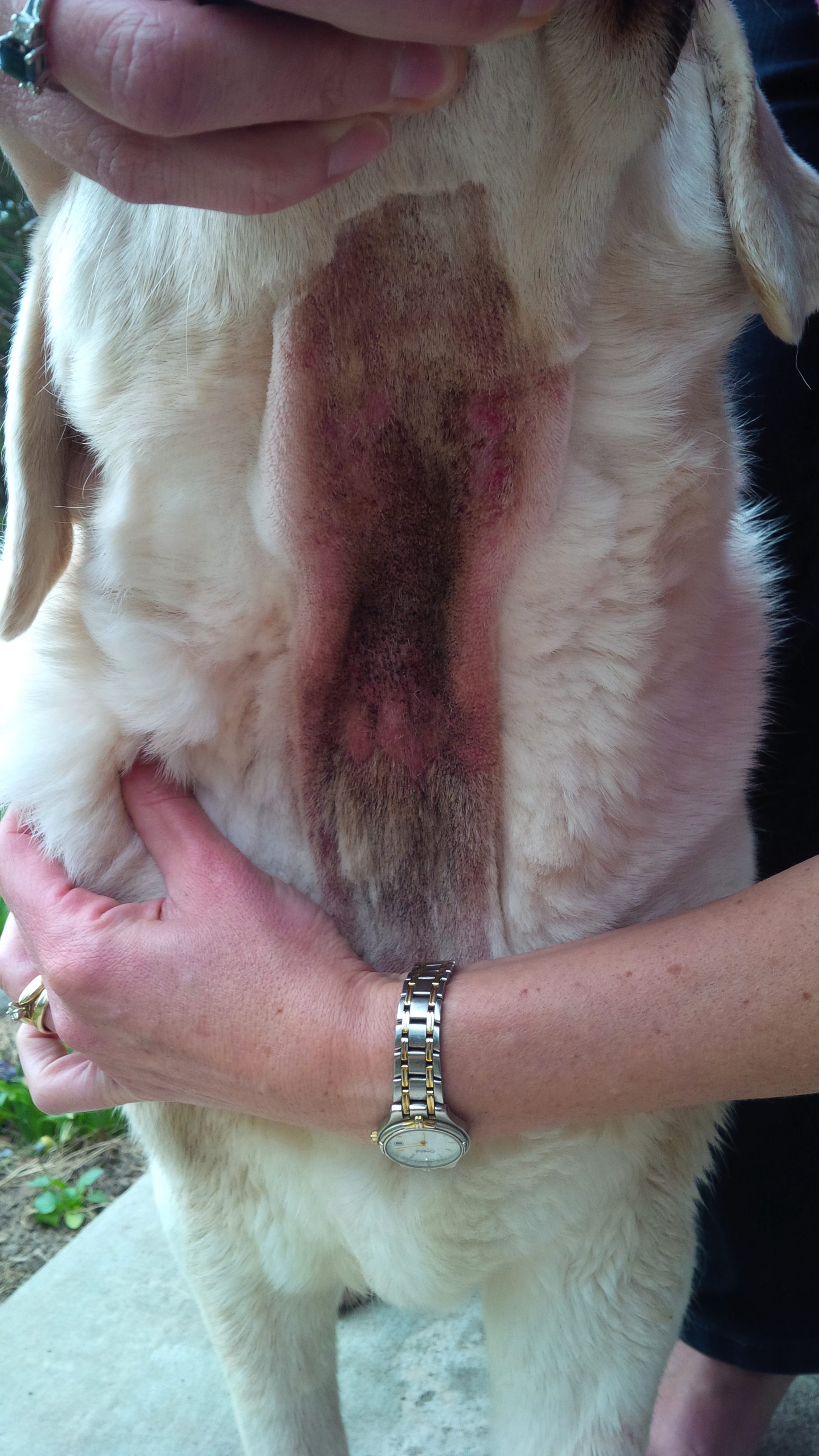 Surprise, surprise – Meg has a hot spot.
Surprise, surprise – Meg has a hot spot.
"Hot spots" (aka focal bacterial pyoderma) are common skin infections in some dogs. Meg has underlying skin issues and lately has spent a lot of time wallowing around in ponds (because that’s what she likes to do). With her skin issues, potentially weaker immune system because of her advanced age, and frequent wetness, she’s a bacterial skin infection waiting to happen.
The latest hot spot is under her neck, and was evident by some colour change in the area (picture #1) and a bit of scratching, along with an odour if you get really close. These signs can easily be missed, especially early on, as the infected site is a bit hidden. Often, people only notice when it gets really wet and stinky, or when the dog scratches at it incessantly. Clipping the area revealed a more extensively affected area (picture #2) and a couple of focal spots with some pussy discharge. (It’s quite amazing what can be hiding under an animal’s fur!)
A hot spot is caused by a bacterial infection, and it’s almost guaranteed that it’s a staph infection (most likely Staphylococcus pseudintermedius). I took a swab from the affected area for culture. That’s probably not critical in a case like this, especially when I’m going to treat it topically and without antibiotics, but since I can do it myself, it never hurts to have the information with regard to what bug is responsible (particularly if the infection comes back again).
 The approach to treating hot spots is pretty straightforward, and owner compliance is key. Here’s the plan:
The approach to treating hot spots is pretty straightforward, and owner compliance is key. Here’s the plan:
Clip the area
- This helps identify the extent of the problem. It also (very importantly) helps keep the area dry and facilitates topical treatment.
Keep the animal from traumatizing the site
- That’s been easy so far with Meg since she’s not really scratching at it. If she was scratching, we’d need to put on an Elizabethan collar or use some other form of protection. In some cases, corticosteroid anti-inflammatories are needed to control the itch (and thereby the scratch).
Keep it dry
- Easier said than done. Despite being old and lazy, Meg is very motivated when it comes to lounging around in whatever water she can find (including the other night at 3:00 am… don’t get me started on that one). Other than that, since the site is clipped now, keeping it dry is not a major problem.
Topical therapy
- This is a bacterial infection, but the advantage of skin infections is that skin’s on the outside. We can treat it topically and avoid using oral or injectable antibiotics. There are various things that can be done this way, usually involving bathing, wiping or spraying the area with topical antiseptics. We’re using an antiseptic spray on Meg.
Infection control
- Nothing major. It’s unlikely that the cause is something zoonotic (and if it’s MRSA, she presumably got it from someone in the family!). The staph that typically cause these infections are common inhabitants of canine skin. They rarely, if ever, cause infections in the absence of some inciting cause so Merlin (the other dog) and Finnegan (the cat) are unlikely to get an infection from Meg in this situation.
- A little handwashing goes a long way.
Hopefully I don’t get to write about the massively increasing hot spot next week.